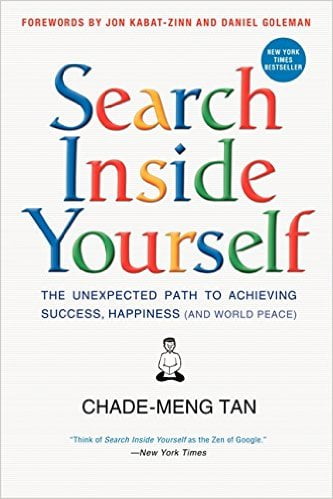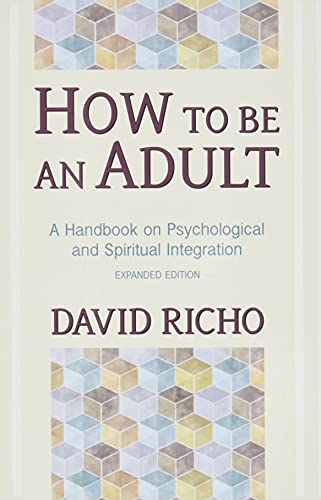OVERVIEW: This in-depth guide provides an integrated framework with over 12 powerful self-awareness activities and exercises to increase your emotional intelligence.
______________
In Ancient Greece, at the front courtyard at Delphi, the former shrine to the oracle Pythia, there was an inscription:
γνῶθι σεαυτόν
It translates to “know thyself,” a famous aphorism often attributed to Socrates or Plato.
What does it mean to know oneself?
At first glance, we might discount this phrase as rhetoric. Sure, I know myself, you might lament. I know who I am. On closer examination, however, we can’t be so sure.
Do we know why we behave the way we do? What drives our decisions? How do we really feel about ourselves and the people in our lives?
All of these questions relate to our level of self-awareness.
Let’s dive in …
What is Self-Awareness?
Self-awareness is knowing what we’re experiencing while enabling us to monitor and regulate what’s occurring internally.
It is the ability to know what we are doing as we do it and understand why we are doing it. Self-aware individuals are more conscious of their thoughts, feelings, attitudes, behaviors, tendencies, and impulses.
That is, with self-awareness comes an increase in consciousness to perceive what’s happening and more accurately interpret its meaning.
 The Five Pillars of Emotional Intelligence
The Five Pillars of Emotional Intelligence
What is Emotional Intelligence?
Emotional intelligence is a term coined by psychologist Daniel Goleman in the 1990s. Goleman brought attention to the fact that IQ isn’t the only form of intelligence. In his 1995 bestseller, Emotional Intelligence, he provided a compelling argument for why “EQ” is often more important than IQ.
While IQ mainly measures mathematic and logic skills, emotional intelligence highlights five areas:1Daniel Goleman, “What Makes a Leader?” Harvard Business Review, 2004.
- Self-awareness: the ability to understand one’s internal terrain including thoughts and feelings.
- Self-regulation: the ability to manage emotions, impulses, and moods.
- Empathy: the ability to understand the emotional makeup of others and treat them accordingly.
- Social skills: the ability to find common ground with others, build rapport, and manage relationships.
- Motivation: the ability to pursue goals for internal reasons (beyond money) with energy and persistence.
Self-awareness is a foundational pillar of emotional intelligence. Self-awareness is the hinge upon which emotional intelligence rests.
What Does it Mean to Lack Self-Awareness?
If we are not conscious of what’s happening inside us, in the language of depth psychology, we are said to be mostly unconscious.
When we are unconscious, we lack self-awareness.
A large body of research shows the extraordinary range of unconscious biases and blind spots humans have.2Emma Young, Lifting the lid on the unconscious, NewScientist, 2018.
Behavioral Economist Daniel Kahneman, the author of the bestseller Thinking, Fast and Slow, shows that we are usually wrong about our interpretations despite our confidence in our self-knowledge.
As it turns out, we aren’t as self-aware as we might think.
Self-Awareness is a Skill
As we progress through this guide, remember that self-awareness is a skill. Skills can be learned and developed by anyone.
As with developing any skill, learning goes through four primary stages. The first stage is unconscious incompetence. When we start something new, we aren’t aware of how poor we are at it.
Try to play a melody on an instrument you’ve never played before, and you’ll know how unconscious incompetence feels.
The discomfort of this incompetence often leads us to avoid learning new things. For most of us, doing self-awareness activities to cultivate this skill requires going through the same discomfort.
As such, most people go through life without developing self-awareness. Yet, self-awareness is a foundational skill for anyone interested in authentic self-growth.
The key to developing self-awareness is the same as building any skill: you need the right methods combined with consistent practice. Thankfully, all the self-awareness activities below can help us increase our sensitivity to what’s unfolding within us.
A Very Brief Tour of Our Brain
When most people talk about “knowing thyself” today, they mainly refer to their minds.
Since the Age of Enlightenment (1700s), we collectively have a cultural bias toward reason and logic. But that’s only part of the story.
For simplicity, we can split the brain into three primary parts:

Basal ganglia (left), Limbic System (middle), and Neocortex (right)
1 – The Neocortex
The neocortex is the thinking or learning brain. It controls language, thought, logic, and reason.
Much of the information in the neocortex is conscious, meaning we can draw on it at will.
2 – The Limbic System
The limbic system is the emotional center. It stores value judgments we make and memories of behaviors that produce positive and negative experiences.
Information from the limbic system is largely subconscious. That is, this information is just below the surface of our awareness.
3 – The Basal Ganglia
The basal ganglia are at the root of the brain. This is our instinctual center. Information travels from our gut to this primitive region without going through the other brain regions.
Information from the basal ganglia is mostly unconscious. We generally can’t access this information at will.
| Brain Region | Function | Center | Process |
|---|---|---|---|
| Neocortex | Thoughts | Mind | Conscious |
| Limbic System | Emotions | Heart | Subconscious |
| Basal Ganglia | Instincts | Gut | Unconscious |
Why We Often Lack Self-Awareness
Self-awareness is a foundational attribute of emotional intelligence, self-leadership, and mature adulthood.
Yet, according to developmental research, less than 2% of the population ever reaches mature adulthood.3Cook-Greuter, Susanne R.. “Nine Levels Of Increasing Embrace In Ego Development: A Full-Spectrum Theory Of Vertical Growth And Meaning Making.” (2014).
Furthermore, researchers have found that even among people who believe they are “self-aware,” only between 10% to 15% of those surveyed fit their criteria for self-awareness.4 Tasha Eurich, What Self-Awareness Really Is (and How to Cultivate It). Harvard Business Review, 2018. (I certainly fell into that 90 percentile who thought they were self-aware in my 20s through my mid-30s.)
So why is self-awareness in short supply?
With self-awareness, we can psychologically develop because we’re constantly getting internal feedback. Without this internal feedback, we are like a leaf riding a wind current.
It’s fair to say that self-awareness should be a trait that all humans possess in abundance. But why don’t we?
Psychiatrist Carl Jung referred to this phenomenon as a “wounded feeling function”—something that plagues the modern world. More recently, Dr. Bessel van der Kolk points out in The Body Keeps the Score, the answer is trauma.
The Body Does Keep the Score
Trauma from early childhood creates dissociation from our bodies.
Dr. Bessel van der Kolk wasn’t the first medical professional to make this important observation. Dr. John E. Sarno successfully treated thousands of patients with back pain and other chronic illnesses from the 1960s through the 1990s without any surgery.
Instead, he presented them with an explanation of how the source of their pain was repressed emotions.
See Healing Back Pain and The Mindbody Prescription. (Surgeons hated him!)
Back in the 1930s, psychoanalyst Wilhelm Reich called this phenomenon body armoring:5Wilhelm Reich, Character Analysis, 1980.
“Armoring is the condition that results when energy is bound by muscular contraction and does not flow through the body.”
Interestingly, this is a core principle in Traditional Chinese Medicine and the internal energy arts.
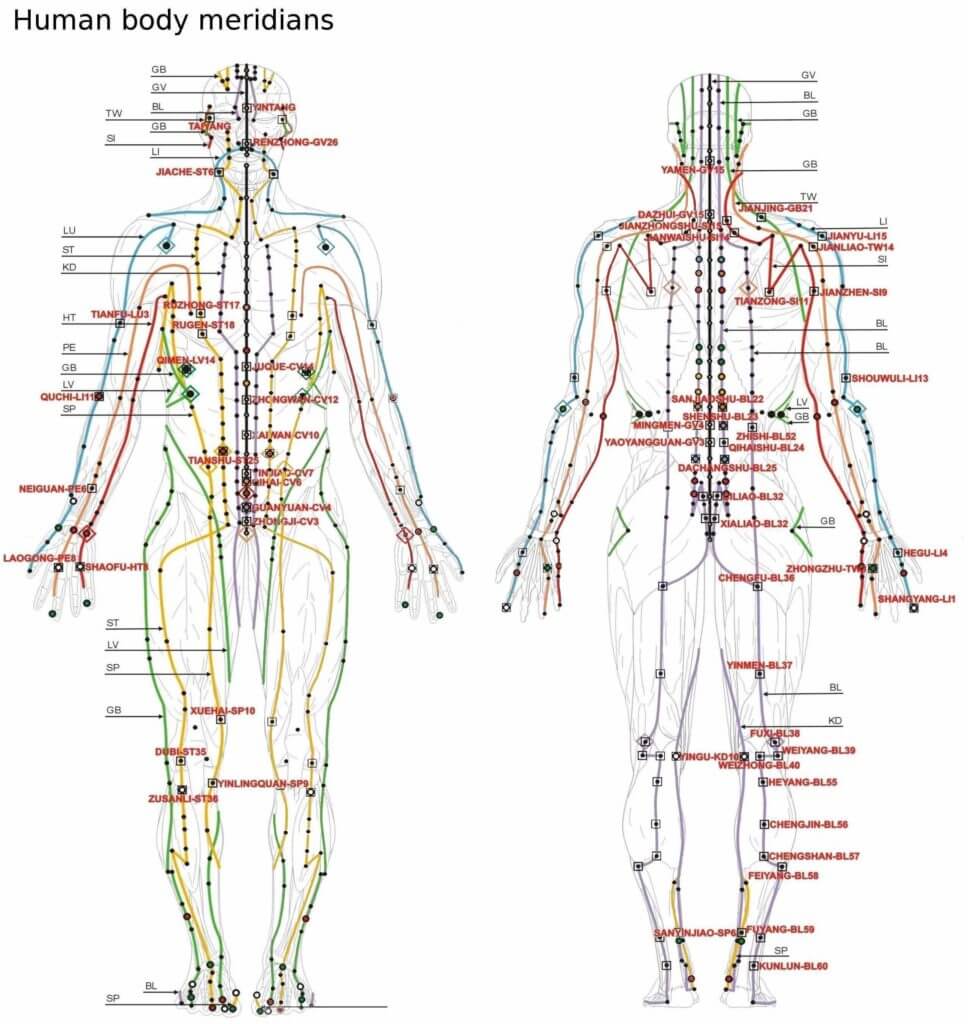
How Trauma Gets Stored in the Body
From this Eastern viewpoint, the vast majority of mental and physical illnesses are psychosomatic. In their understanding, blocked emotions cause energetic stagnation.
Many centuries ago, qigong adepts with high levels of energetic sensitivities mapped out the body’s complex web of meridians (energy channels).
This energy stagnation doesn’t just cause blockage in the muscular system as Reich theorized, it disrupts the natural flow of energy in these meridian channels, the organs, the endocrine system, and more.
Unable to process traumatic childhood events with full consciousness, these experiences and their related sensations are relegated to the unconscious (our bodies).
With this dissociation, we’re essentially cut off from many innate capacities like self-awareness.
When we can’t feel our bodies at a clear and visceral level, how can we receive internal feedback that promotes self-awareness?
An Integrated Approach to Building Self-Awareness
Many attempts to develop self-awareness fail because they only target the neocortex—our thoughts, beliefs, biases, and other mental processes.
To develop greater self-awareness, we seek to become more conscious of what’s driving our behavior (thoughts, feelings, impulses, conditioning, images). That is, we must address what’s currently unconscious.
To begin addressing one’s unconscious, it’s beneficial to first address the trauma stored in the body. This is especially the case if you’re experiencing emotional and/or physical numbness.
Then, it becomes easier to increase our sensitivity to our emotions and instincts—the information we often fail to access with our conscious mind.
“Intelligence” in different areas of our lives translates to sensitivity. When we lack self-awareness, it means we don’t have sensitivity in this arena.
Next, through various self-awareness activities and exercises, we can strengthen our conscious connection to all three “brain” regions. That is, once we increase our sensitivity to information stored in our bodies, we can explore things like our thoughts, beliefs, labels, and biases with greater results.
Different self-awareness activities strengthen connections in various brain regions.
Self-Awareness Activities: Releasing Trauma from the Body
Again, before we can make significant progress in cultivating self-awareness, it’s prudent to first address trauma or stagnation stored in the body.
Therapeutic modalities for addressing stored trauma include:
Trauma Release Exercises (TRE)
Created by Dr. David Berceli, TRE provides a powerful set of deep stretches and exercises designed to produce spontaneous shaking. This shaking helps the body release stored emotional trauma.
Bioenergetic Analysis
Developed by physician Alexander Lowen, bioenergetics is a therapeutic technique designed to help people release chronic muscular tension. The field of bioenergetics is largely inspired by Wilhelm Reich’s work mentioned above.
EMDR
EMDR stands for Eye Movement Desensitization and Reprocessing. It’s a form of psychotherapy used for individuals with various traumas and post-traumatic stress disorder (PTSD). Dr. Van Der Kolk highlighted a lot of compelling research related to EMDR in The Body Keeps the Score.
Psychedelic Psychotherapy
Psychiatrist Stanislav Grof conducted pioneering research where psychotherapy patients were administered LSD in the 1960s. These experiments yielded meaningful results. See his LSD Psychotherapy for an interesting read. His results would probably have been amplified if he used a naturally occurring psychedelic substance like psilocybin (“magic mushrooms”) or peyote instead of LSD.
I address each of these modalities in more detail in this guide on repressed emotions which deals more directly with trauma.

The Importance of Strengthening the Mind-Body Connection
Abraham Maslow writes in Toward a Psychology of Being:
Humans no longer have instincts in the animal sense, powerful, unmistakable inner voices which tell them unequivocally what to do, when, where, how and with whom. Authentic selfhood can be defined in part as being able to hear these impulse-voices within oneself, that is, to know what one really wants or doesn’t want, what one is fit for and what one is not fit for, etc.
Reconnecting with our body/instincts is an integral part of developing self-awareness. Again, trauma stored in the body leads us to divorce ourselves from our feelings and instincts early in life.
To reforge these connections, we must learn how to sink our awareness into the body. Pretty much any integral, body-mind practice can help you accomplish this.
In No Boundary, integral theorist Ken Wilber labeled body-mind integration the Centaur Level—an essential stage of human development.
Four Self-Awareness Activities for the Body-Mind Connection
Here are four self-awareness activities and exercises that can help strengthen one’s body-mind connection:
Conscious Breathing
Conscious breathing is less of a “technique” and more of a process of restoring the body’s natural way of breathing. Once again, emotional trauma from childhood conditions most of us to breathe incorrectly in adulthood. Learning how to “tune the breath” is an essential component of cultivating self-awareness.
See this guide on proper breathing principles.
Grounding Techniques
Grounding techniques offer another simple exercise to bring our awareness back into the body by restoring our connection to the Earth. Grounding methods can initiate a powerful healing process on multiple levels.
See this guide on how to ground yourself.
Conscious Stretching
We all have energetic blockages resulting from unprocessed emotions. Stretching is a key component to many modern approaches like TRE and Bioenergetic Analysis as well as ancient systems like Qigong and Yoga. The key to conscious stretching is to allow your awareness to sink into your body and pay attention to the regions you’re stretching. (That is, pay attention to your body instead of distracting yourself with music or a screen.)
Qigong and/or Yoga
In The Body Keeps the Score, Bessel van der Kolk also highlights the importance of integrative practices as a form of recovery. While I regularly do a select number of classic yoga postures, I have invested a great deal of time training in various forms of qigong and internal martial arts over the last fifteen years. If there was one thing that aided me in body-mind integration the most, it was qigong-related practices.
See this guide on Zhan Zhuang for a brief overview of qigong and step-by-step instructions on how to get started with this ancient standing practice. It truly can help you develop a deeper level of body awareness.
Self-Awareness Activities to Get to Know Your Personality
Your personality is essentially a collection of patterns. These patterns include thoughts, beliefs, worldviews, feelings, tendencies, impulses, and behaviors.
Our experiences and environments condition these patterns in us. Many of these patterns lie below the surface of our awareness. By getting to know our personality, we bring these patterns into consciousness thereby increasing self-awareness.
Self-awareness activities for your personality include:
Personality Assessments
Assessments like the Enneagram, Myers-Briggs, and Human Design Engineering provide insights into the dominant patterns of behavior for your personality type.
A personality system like the Enneagram will also highlight your biggest fears and your strongest desires. These systems can be profoundly useful when you start learning about yourself.
Values Discovery
In Emotional Intelligence, Goleman notes that a self-aware person is more likely to know their values. Core values answer the question: What’s most important to me?
When you become aware of your personal values, you can evaluate if you’re living in accord with them. Values assist us in emotional self-regulation. They also help us make better decisions. Here’s a list of core values examples.
Strengths Assessment
Psychologist Martin Seligman and his team developed another interesting assessment tool to determine a person’s character strengths based on the classic virtues from antiquity.
The VIA Institute on Character offers a free survey that highlights your most natural strengths and weaknesses. This is another useful assessment to you gain greater awareness of your personality. See my guide on authentic happiness as a primer (with links to the survey).
Self-Awareness Activities for Preparing the Mind
As you begin to improve your body-mind awareness through the above exercises, your overall level of self-awareness can potentially improve on its own.
The more you sink your awareness into your body, the more present you become. As your awareness begins to sink into your body, your mind becomes more stable. You experience less mental chatter and patterns of rumination.
With a deeper presence, more conscious attention goes to your emotional and energetic body.
As you initiate this body awareness process, take up introspective practices to support integration. Remember, the idea here is to use self-awareness activities to bring body, heart, and mind online together.
Two Common Ways We Avoid Cultivating Self-Awareness
To avoid embracing our inner landscape, we often follow two predictable patterns:
- Distracting ourselves, and
- Moving too quickly.
Both of these patterns are so “normal” that we don’t even think about them. “Well, everyone does that!”
Yet, by staying distracted—for example, constantly checking our devices—and moving too quickly from one thing to the next, we ensure that we don’t pay attention to what’s going on inside of us.
Ultimately, these two “normal habits” are a sly form of avoidance behavior. An essential part of cultivating self-awareness is learning to slow down with whatever we’re doing.
Then, we can become more receptive to internal information (like feelings and judgments) that we’re currently repressing and suppressing.
Self-Awareness Starts From Your Center
Before we attempt to cultivate self-awareness, it’s important to get acquainted with the concept of the Center.
The Center is that at-home feeling within ourselves. When we’re in the Center, we are calm, lucid, alert, and neutral. That is, in the Center, the ego isn’t reactive or easily triggered.
The Center is our natural home. Trauma draws us out of the Center early in life. As we address our trauma, there’s a natural movement back toward our inner home.
Learning how to center yourself is a vital step because it increases our focus and attention. Attention is essential for learning, understanding, and developing in any area. In the context of using self-awareness activities, the quality of our attention will determine the efficacy of the exercises.
Thankfully, we have many exercises and practices we can use to cultivate attention and many of these activities also help us build self-awareness.
(For a powerful and simple practice, you can use each day to access your Center quickly and consistently, check out The Mastery Method: Activate Your Higher Potential.)

Developing the Inner Observer for Self-Awareness
The key to many forms of meditation is to develop what’s called the inner observer, observing self, or observing mind.
Here, we’re not so interested in the content of the mind (thoughts, sensory perception); instead, we want to meditate on the meditator.
Archetypally speaking, the observing mind is a primary function of the Magician archetype (also called the Sage). When we access this Magician energy, we gain a unique perspective on our life experiences and inner world.
The reason we often lack self-awareness of our behavior is that the ego is essentially a collection of archetypal patterns.
Each archetype acts semi-autonomously. That is, we have no one in the Center monitoring our thoughts, feelings, actions, and behavior from moment to moment.
By cultivating the inner observer, we create a space between the doer of actions, the thinker of thoughts, and the feeler of feelings. The observing self can then monitor our thoughts, feelings, actions, and gut reactions with objectivity.
It’s important to understand that most of us don’t have this observing self to a high degree unless we cultivate it. Without this inner observer, we can’t effectively develop self-awareness.
Also, remember, early trauma makes the Center elusive; only in the Center does the observing mind come alive. If you’re new to meditation, see this in-depth guide on meditation training. It’s a powerful self-awareness activity that anyone can use.
Self-Reflection
As you develop this observing mind and further root yourself in the Center, a kind of internal analysis begins to manifest. You begin to slow down and become more reflective.
For starters, take time in the evening to reflect on your behaviors, attitudes, and emotions from the day.
- Did I get emotionally triggered at all today?
- What happened? What was I feeling?
- Why did I say such and such?
- What can I learn from observing my behavior today?
You can also pause at random intervals during the day, and ask yourself: What am I feeling right now?
Perhaps a conversation you just had at work or with your spouse left you feeling ungrounded. Inquiry as to why that may be.
Active Journaling
Many people find it helpful to keep an active journal where they record their insights and observations from self-reflection.
Capturing our inner thoughts and feelings in a journal helps us objectify them. Sometimes we have a sense of what we’re feeling, but it’s still vague or ambiguous.
In writing your inner observations down, you’re drawing them further into consciousness. It helps to flush out what you’re feeling so you can articulate your emotions more clearly. Plus, you may be able to identify specific patterns that you’re currently unaware of.
Self-Awareness Exercises from Depth Psychology
Personally, I simply don’t see how anyone can develop true self-awareness without investing time in getting to know their “darker half”—what Carl Jung called the Shadow.
The universal archetypes are the home of our emotions, thoughts, and behavioral patterns. They provide a shorthand for understanding our inner lives.
This is a deep topic that I address in detail elsewhere. For reference, see:
How to Get to Know and Integrate Your Shadow
A Practical Guide to Active Imagination
We might say that depth psychology offers more advanced forms of self-awareness activities. The one drawback of these methods is that there is a steeper learning curve.
How to Improve Self-Awareness Through Others
Finally, let’s look at a few self-awareness activities that involve observing and getting feedback from others to learn about ourselves.
Observing Others
Many people who practice shadow work notice (especially in the beginning) how much easier it is to observe other people’s shortcomings than one’s own.
A fundamental insight from humanistic psychology is we are all far more alike than we are different.
In observing other people, we can often learn a great deal about our behaviors, emotions, and attitudes. Sit on a park bench or gaze out the window from a cafe and simply observe. Watch people’s body language, facial expressions, and hand gestures when they communicate.
What do you see? What do you feel? That is, what are they feeling beneath the surface?
This is a tremendously powerful self-awareness exercise. In the beginning, it’s not about “getting it right”; it’s more about exercising your observational muscles that are essential for cultivating self-awareness.
Getting an External Perspective
As John Whitmore, a pioneer in the coaching industry and author of Coaching for Performance, writes,
“Building awareness, responsibility, and self-belief is the goal of a coach.”
A primary way a coach helps their clients build awareness is by providing effective feedback.
In corporate environments, many organizations use 360-degree feedback, an assessment tool for providing employees with performance feedback from their supervisor and up to eight peers.
Of course, you don’t need a coach or a formal process for this self-awareness exercise. You can ask a trusted friend questions like:
- What behaviors do you believe are limiting my potential?
- How do you generally feel when you’re talking to me?
- What do you think I’m good at? What are some of my weaknesses?
- If you had to describe me to someone, what would you say?
- Is there anything you avoid saying to me because you’re afraid of how I’ll react?
You can only ask these types of questions to a trusted confidante and from a place of openness.
Recap: On Developing Self-Awareness
Self-awareness is a skill that helps us monitor our behavior and better understand our motives and ourselves.
The stronger our observing self becomes, the more space we have between us and our thoughts, feelings, and actions.
Most people fail to develop emotional self-awareness because they don’t get rooted in their bodies first. Integrating the various regions of our brain that guide our instincts, feelings, and thoughts helps increase our self-awareness.
By practicing a range of self-awareness activities and exercises, we can address our bodies, emotions, and thoughts. This integrated approach is the key to cultivating true self-awareness.
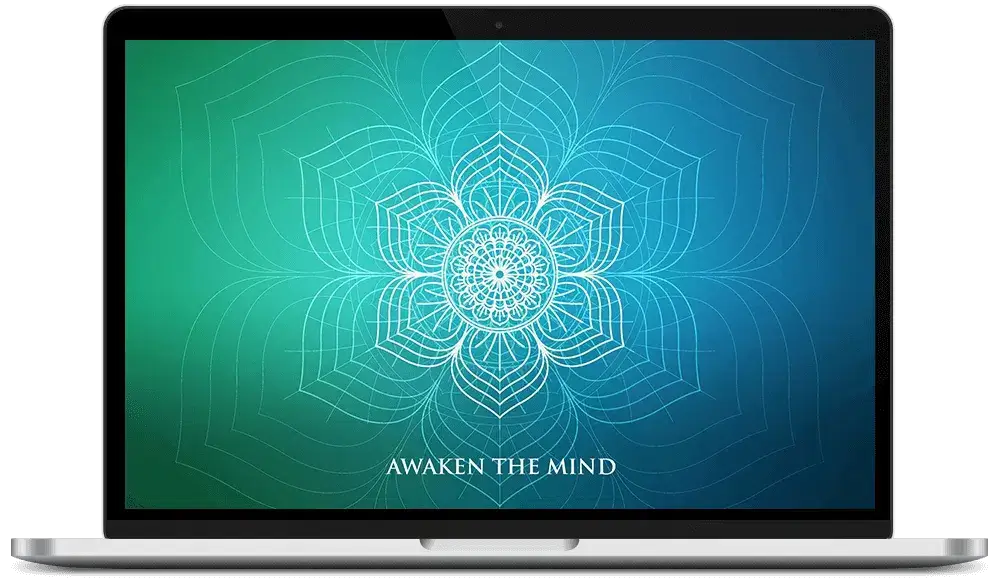
Awaken Your Mind with a Digital App?
Okay, so what I’m going to share with you now may sound like science fiction.
Eric Thompson is the founder of Subtle Energy Sciences. Using quantum resonance technology, Eric engineered a method of encoding digital images and sound files with specific energy signatures. The result is what he calls Digital Mandalas, which combines beautiful digital art with layers of various energy-related sound technology.
This digital media program broadcasts the amplified energetic signature of what’s called “Awaken the Mind.” The brainwave pattern featured in Awaken the Mind is a rare brainwave pattern first identified by British researcher C. Maxwell Cade. Cade found that this pattern represents the integration of meditative states of consciousness with the normal, waking state in a unified state of mind.
I always have at least one of Eric’s mandalas running on my computer and other devices (usually more than one). Now, if you don’t have energetic sensitivity, you may feel nothing at first. If that’s the case, Eric offers various ways to augment and optimize the effects.
If you’re open to exploring new technologies, check out Awaken the Mind.
Use code CEOSAGE30 for a 30% discount.
(Disclaimer: affiliate link above)
Reading List for Self-Awareness Activities
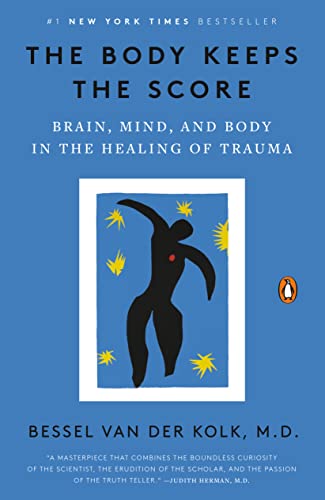
The Body Keeps the Score
by Bessel Van Der Kolk
Search Inside Yourself: The Unexpected Path to Achieving Success, Happiness (and World Peace)
by Chade-Meng Tan
Emotional Intelligence: Why It Can Matter More Than IQ
by Daniel Goleman
How to Be an Adult
by David Richo
Read Next
How to Decalcify Your Pineal Gland (And Why It’s Really Important for Psychological Development)
5 Transformative Methods to ACTIVATE Your Pineal Gland and Tap Into Your Superhuman Potential

